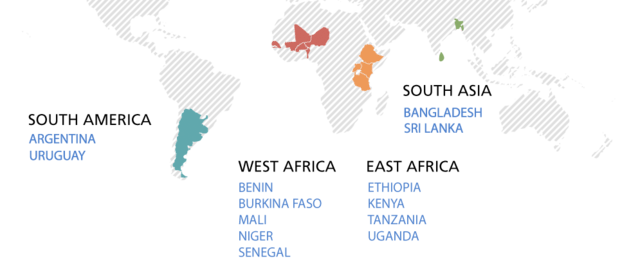Emissions intensity and the mitigation potential of enteric methane varies widely across regions and livestock production systems. Helping farmers improve the productivity of ruminants is a key way to improve rural livelihoods and food security while reducing emissions intensity.
The Livestock Research Group (LRG) has contributed to a major capability building project identifying regionally appropriate low emissions pathways for livestock development in South America, Sub Saharan Africa and South Asia. The project has enabled participating countries to identify and model cost-effective mitigation options that will significantly improve the efficiency of livestock production and reduce enteric methane emissions intensity. The goal is to identify packages of measures that fit local farm systems, resources and capabilities and avoid inadvertent tradeoffs.
Data from this project will also support the Livestock Research Group capability building programme on advanced greenhouse gas inventories for livestock.
Reports are now available on low emissions development in the following countries:
- The beef cattle sector in Uruguay
- The dairy cattle sector in Ethiopia
- The dairy cattle sector in Bangladesh
Reports on other countries are due soon, and planning is underway for a second phase of the project that may include farm-scale testing.
The UN’s Climate and Clean Air Coalition and the New Zealand Government have funded the project, and the work is being led by FAO and the New Zealand Agricultural Greenhouse Gas Research Centre with support from the World Bank.

